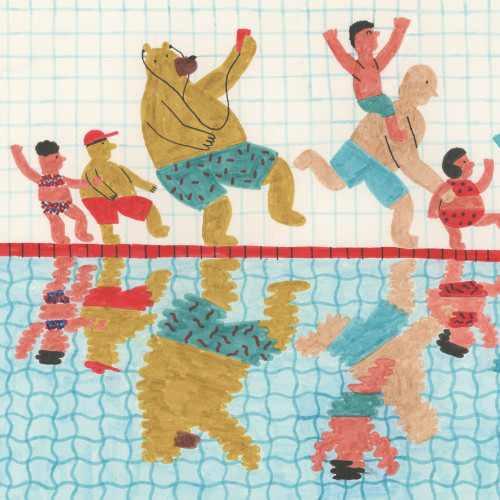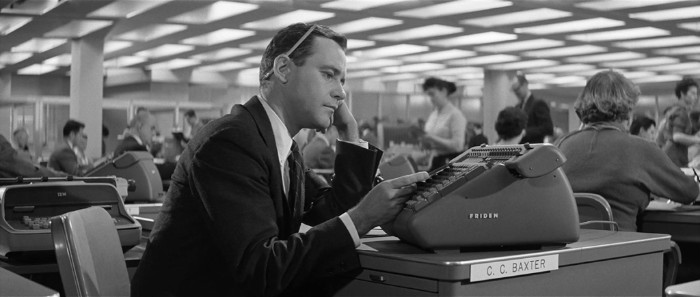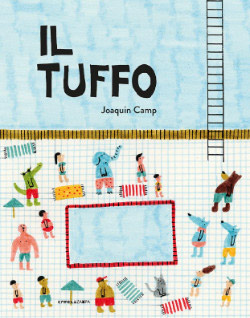< Back to posts
Joaquín Camp
Argentina

Joaquín Camp studied Graphic Design at the University of Buenos Aires. As an illustrator, he’s worked for publishers in Argentina, Spain, Korea, the US, UK, Canada and Saudi Arabia. He’s been selected three times for the Bologna Children’s Book Fair Illustrators Exhibition, and the dPICTUS Unpublished Picturebook Showcase five times.
In this post, Joaquín talks about the creation of The Jump. This exhilarating picturebook about taking the plunge is published in Italy by Camelozampa.
Joaquín: I recently heard a Spanish film director named Javier Calvo saying that there were two types of scenes when you shot a movie: those that you want to film and those that you need to film. I really liked this thought because I think it adapts perfectly to the idea of a picturebook.
On one hand, we have pages in which we know that we are going to look really cool, show off conceptually, aesthetically or in any other way we want; and then we have pages in which we must sacrifice fireworks, either for the clear narrative of the story or simply because the book in that place needs something simpler. In the case of The Jump, I started with the scenes I wanted to draw. I made five illustrations with a clear objective: to be in the Bologna exhibition, and I achieved it. The good news: I had five beautiful illustrations. The bad news: I was missing everything else. It was like having five gorgeous rooms in a house, but the pipes, columns, windows, etc, were missing.
I don’t have a formula for making books. In fact, it always varies. In this case, these five images came almost as a gift and I had to figure out what to do with them. It’s like when in music they ask composers if they write the lyrics or the music first. If I had to make a parallel, the music came to me first, or at least some pieces of it. The drawings were on the wall of my studio for several weeks, I looked at them trying to think what they wanted to tell me.
Finally, the idea that would structure the entire book came to me when I was in the shower: what would happen if the child on the diving board had the intention of jumping into the pool repeatedly, but always regretted it at the last minute? The idea of something that is about to happen but doesn’t has been used countless times in children’s literature. For example, in Duelo al sol, by the Spanish author Manuel Marsol, where Manuel tells the story of a cowboy who fights a duel with an Indian, but when it is time to start with the shooting, the strangest events always occur and this always stops the action.
After having a clear structure, I began to make a list of all the reasons why the child might be afraid of jumping into the pool — and I think the best options happened when I could connect with ideas from my childhood. For example, I remember swimming in a friend’s pool at night and being very afraid that there was a shark or similar monster under there. When I talked about this with other friends, it seemed to be a pretty common fear.
Then the writing stage began. I really enjoy writing, almost more than drawing, but the processes of both things are very different. In the case of drawing, I can be in my studio for eight hours straight, drawing without any problem; In fact, I am quite rigorous and constant when it comes to illustrating.
With the writing, the process is very similar to fishing. There may be a day where all you do is think and maybe only one line comes out. There may also be other days where you write a lot but perhaps none of that words are very useful. That uncontrollable process is quite funny to me because you don’t know what can happen.
I write because I feel like I can make a custom suit for myself, and because Joaquín the writer can also bother Joaquín the illustrator whenever he wants, since they live in the same house.
A few years ago I was going to a writing school in Madrid. We had to write a short text every week, and the teacher suggested me to write about dark themes: murders, violence, etc, to get me out of my comfort zone. But every time I read one of my stories in class, my classmates couldn’t stop laughing. So there I was, talking about the most heinous crimes imaginable in a classroom bursting with laughter. It seemed impossible for me not to use acid humour even in the most extreme situations. Writing is a very interesting process of self-knowing, I think.
But, returning to the book, I really like trying different types of voices when I’m writing. A voice that speaks from the main character, another that speaks from a secondary character who is watching the scene, another from an omniscient narrator, etc.
In some cases, I have even changed the narrative voices of the text, depending on the country in which it is published. Sometimes I find it interesting to play with the text if the editors can give me strong enough reasons to do so. In the case of The Jump, something very curious happened. The publisher of the Mexican edition decided to work on a text that was totally different from other editions. They wanted the voice to come from the main character, and that all of his insecurities could be seen in him when it came to taking the leap, plus the child’s age is younger.
On the other hand, in the Italian version of The Jump, the voice is a “sports narrator, expert in diving” but at the same time tries to suck up to the boy’s character so that he does not look so cowardly. Like when in The Great Dictator by Charlie Chaplin, he is flattered, but in reality everyone knows that he is quite clumsy. I was always fascinated by the story of The Emperor’s New Clothes.
Once I find the narrative voice, a rather chaotic process begins where I move the scenes around a lot to be able to put together the storyboard. Scenes that may have been at the beginning move to the end, new scenes appear, or I have to delete scenes that were there a while ago. This last point is usually the most complicated, because many times you find a great idea for a book, but when you put it all together you realise that that idea breaks the narrative thread. Billy Wilder said that this was one of the most complicated things a director had to do, which he and the screenwriter with whom he always worked, I.A.L. Diamond called “to kill your darlings”.
In the case of The Jump, I think the strong moment of the book is when the child starts imagining what a great jump could it be. It is a moment that breaks the structure that had been building the book: the idea of “jump or not jump?” I think it is very important to have some situation that breaks the structure that has been introduced, especially to be able to surprise the reader and take it along a path that they’d not imagined. Breaking with monotony generates an air change that feels great.
Among the things that the child imagines when he is going to jump is one of my favourite scenes. The child believes that his jump will be so wonderful that the mayor will give him the city keys. The curious thing about this scene is that the “award” ceremony takes place with all the characters in their swimsuits, including the mayor. I think this scene would not have the same grace if everyone was dressed. I really like that the book has its rules and that these rules can be stretched and lead to the most bizarre situations that one can imagine.
In this book, all illustrations are handmade, with a marker. In general, I first create the line drawing, then I put that drawing on a light table and finally fill in all the colour with a marker.
I do not usually do many tests. I choose a colour palette and paint on the drawing online without knowing very well what will happen. I think that the possibilities offered by digital tools to infinitely try things don’t give me good results. I heard a very interesting reflection of music producer Brian Eno about this. He was talking about music, but I think it adapts well to what I mean. Eno said that digitalisation sometimes was like when you had several plasticine colours, and when you joined them, at first interesting colour mixtures appear, some strong, some vibrant... but after one week, those colours end up becoming a brown boring tone. With illustration, something similar happens to me. You change, for example, a line that you do not like so much for one which is more beautiful and better realised than the previous one. At first there is an “improvement”, but as you advance with this idea of perfecting everything, the enlightenment is so well resolved that it lacks all humanity.
I really like to hide tributes from my favourite books in my stories. Many times, I like to use them as a protection, to give the book some luck. In this case, there is a moment of the book where the child imagines that his jump will be so incredible that all the people of the pool will make a party in his honour, and what better celebration is there than in Where the Wild Things Are by Maurice Sendak? Copying the structure that this illustration has makes you understand why Sendak was so brilliant. The movement and distribution that the characters have on the page have very similar logics of the Renaissance.
Illustration from Where the Wild Things Are by Maurice Sendak (Harper & Row, 1963)
One of the things that I enjoy the most when making books are the covers. In the case of The Jump, I wanted to play with the suspense. It occurred to me that the best way to generate some tension was that all the characters in the book were looking up, but that the main character was out of sight. In this way, it was not very clear about what was happening and that generated an interesting intrigue.
I think we are reaching the end of this post, which reminds me that I have not spoken about the end of the book. The ending is the most difficult part. If the end of a story is lazy, everything falls like a house of cards.
I thought of several endings for this book, and concluded that the best option was that someone (some mysterious hands) finally threw the character into the pool, and then the child rejoins the queue and waits for his turn, while complaining about the children who take a long time on the diving board.
I really like the irony at the end, but I think that what I like most is the idea of circularity, something that starts again, like when as kids we were afraid of something, but once we overcame it we wanted to do it again and again.
So now, with your permission, I am going to put on my swimsuit and throw myself into the pool. Well, actually into a friend’s pool, because I don’t have one.
Bye bye.
Illustrations © Joaquín Camp. Post edited by dPICTUS.
Il Tuffo /
The Jump
Joaquín Camp
Camelozampa, Italy, 2023
Jumping into a pool might seem easy peasy, but it can become terrifying as soon as you face it from the edge of the diving board!
Time stops when you are about to jump. Will our hero be brave enough?
- Italian: Camelozampa
- Spanish: Fondo de Cultura Económica
- Korean: Nonunnal





















